

Originally posted June 25, 2017
Here we have a Beretta Model 92.
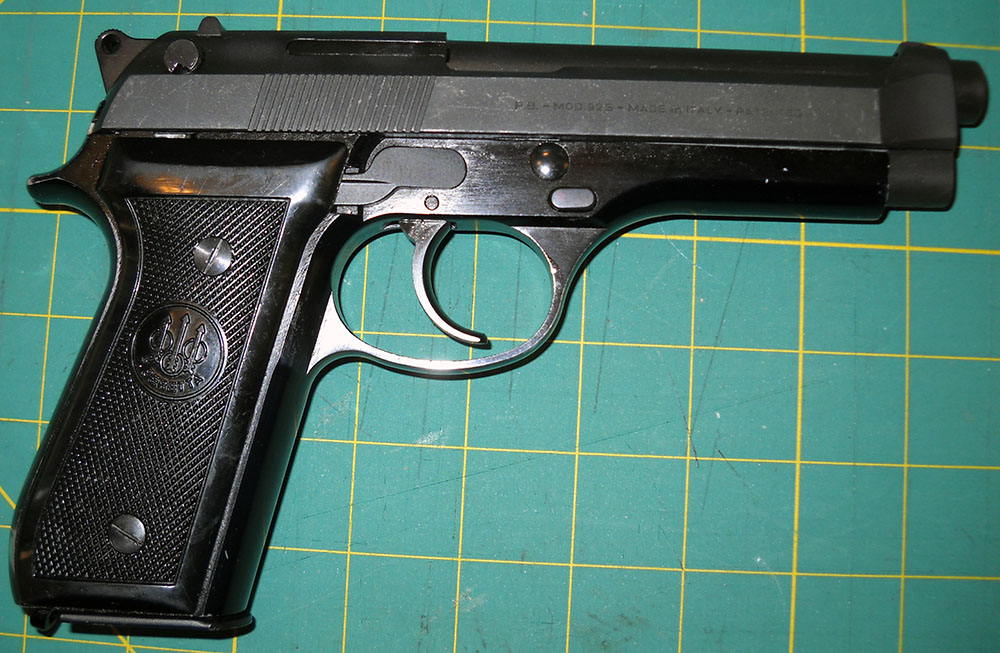
But which Beretta Model 92?
Well, it's not a 92F, a 92FS, or an M9; it doesn't have the '80s-a-riffic squared-off trigger guard. It can't be a 92A1 (on which they have since omitted the squared trigger guard again, as they've gone back out of fashion), there's no accessory rail. It doesn't have removable sights, so it's not a Brigadier. It's got a double-action trigger (you can usually tell by how far forward the trigger is when the hammer is down), so it isn't a 92 Combat, and it has a hammer spur, so it's not one of the double-action-only models (a D or DS). And it's obviously not an Egyptian Helwan 920 clone, a Taurus PT92, or a French PAMAS G1.
What we have here is a 92S, which was only the second of the very large number of variants the Model 92 has had in its 40-year lifespan so far. What sets the 92S apart from both the original 92 that preceded it and the 92F that followed can both be seen over on the left side.
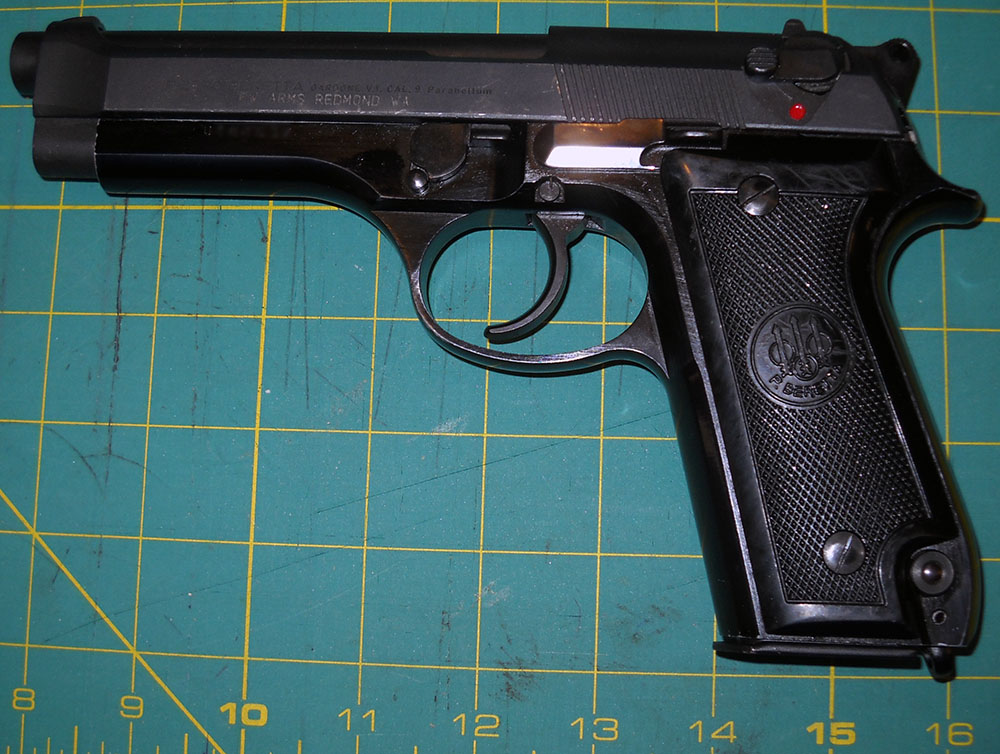
Up on the slide, we can see what differentiates the 92S from the original 92: the slide-mounted safety/decocker lever. The original 92, of which I don't have a photo, had a frame-mounted safety. Supposedly the slide-mounted safety-decocker was added at the request of Italian police agencies, which used the resulting 92S model as a standard sidearm until quite recently. (As an aside, this is why the Taurus PT92 has a frame safety—it's a clone of the original 92.)
Meanwhile, the key difference between the 92S and the succeeding 92F can be seen down on the grip. See that button just above the heel? That, strangely enough, is the magazine release. Earlier Berettas, like the Model 1923 (one of the earliest Berettas to use the now-traditional open slide), had a more typical heel-mounted magazine catch. The 92F has the more customary button up by the base of the trigger guard. But on the 92 and 92S, they sort of split the difference—they made it a button, but they put it there.
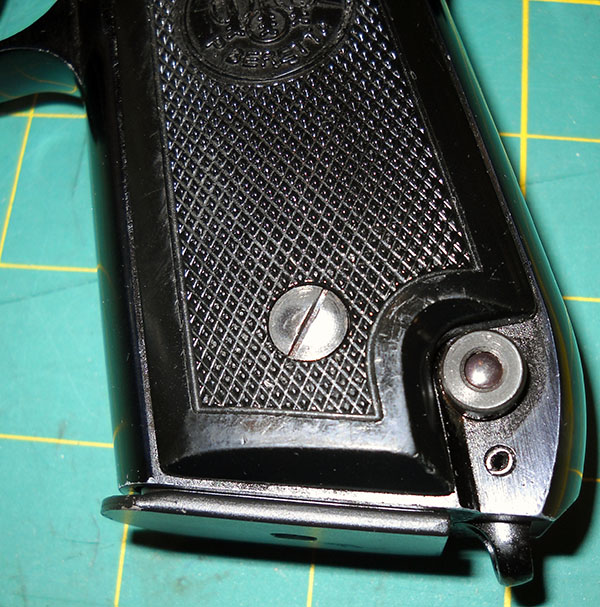
It is a bit weird, and it means the earlier models can't use the much more common magazines made for the 92F and its many, many successors. The newer magazines don't have the appropriate notch for the earlier magazine catch, which can be seen down at the bottom of the magazine here:
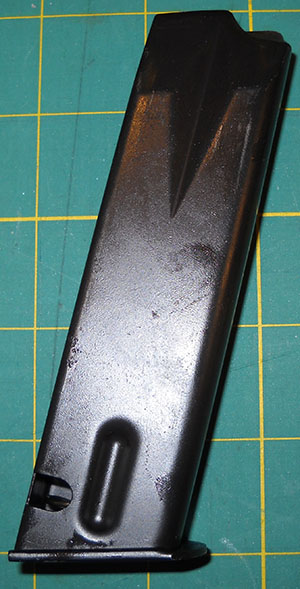
Apart from the location of various controls and the way the trigger system works, all the Beretta 92s operate on the same mechanical principle, which, once we take it apart, we should recognize. To disassemble it, we have to flip a familiarly-placed lever on the lefthand side (which has a little spring-loaded button next to it to keep it from being flipped accidentally), and then the slide-barrel assembly comes off the front in a pretty typical fashion.
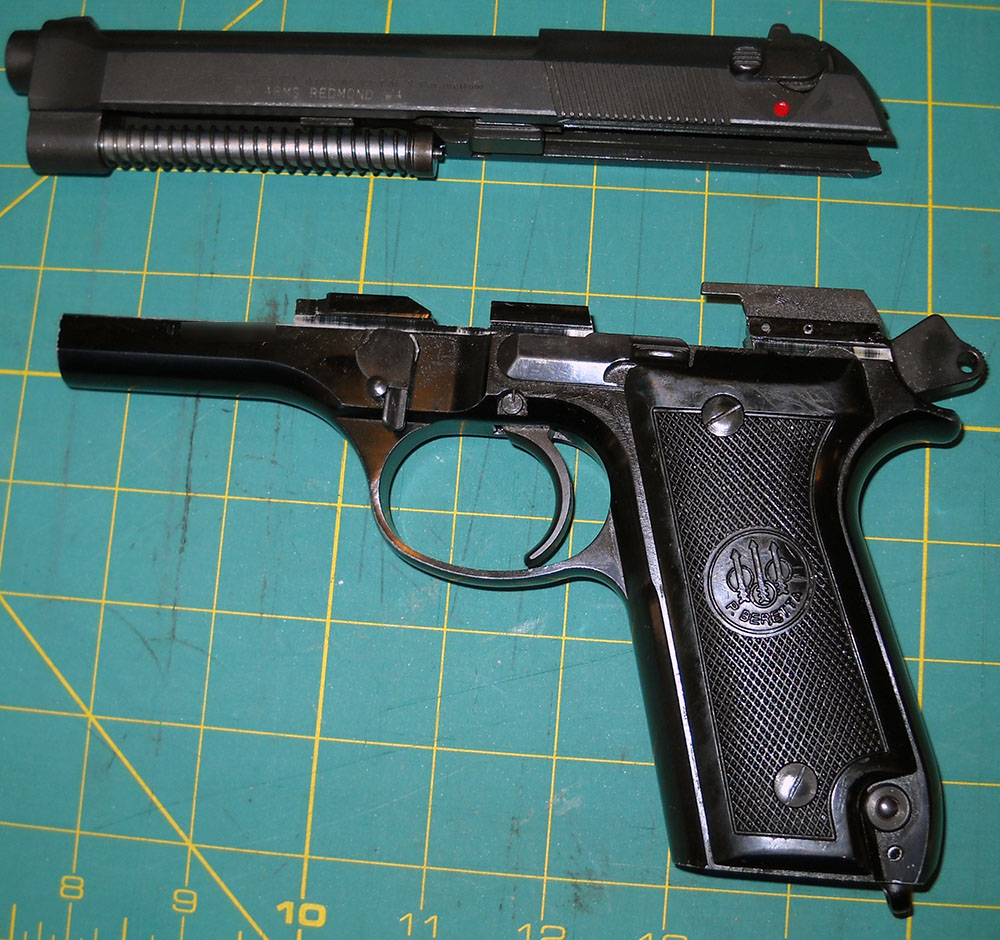
Once the slide-barrel assembly is off, the recoil spring can be removed in much the same way that this would be done with most Browning-type automatics. At that point, though, if you turn the assembly over and take a look underneath, you'll see a system that is very different from anything Mr. Browning ever designed—but which should still look very familiar.
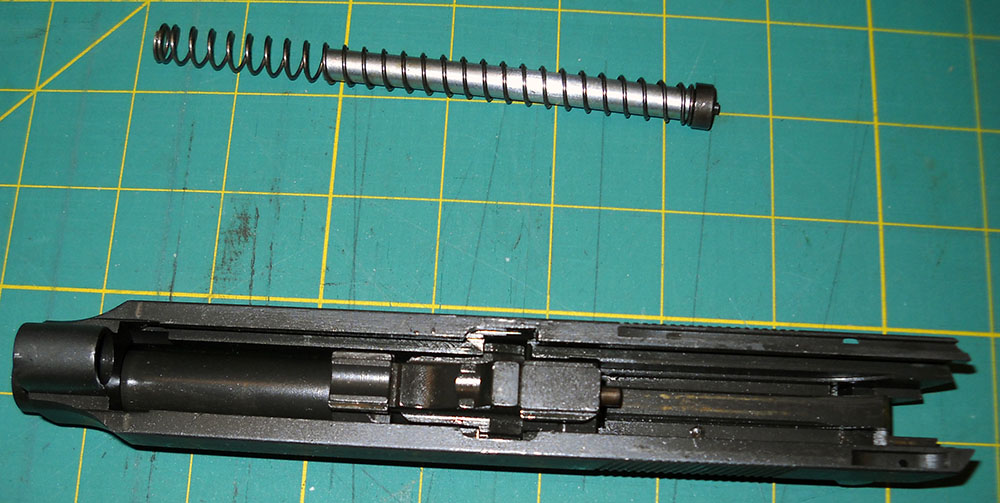
Yep. It's the Walther system, as seen in our old friend the P38.

The Walther lock works exactly the same in the Beretta as it did in the original. The barrel and slide recoil together until that button at the back of the lock hits a surface inside the frame:
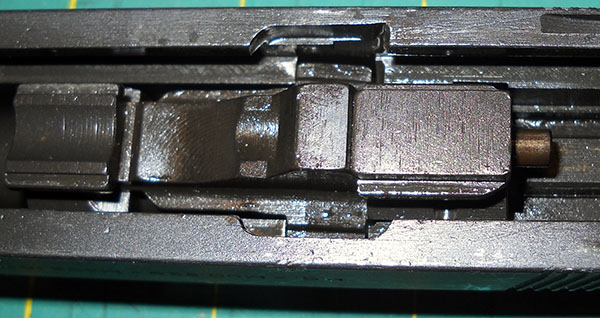
When forced against said surface, the button is pressed in and forces the locking wedge downward, which disengages the barrel from the frame and lets the latter proceed the rest of the way back without the former.
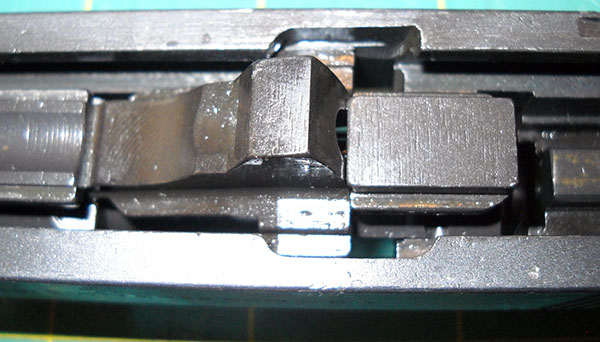
The only real difference between the two systems is that the Walther has its twin recoil springs mounted so that they remain captive on the frame when the pistol is apart, whereas Beretta's engineers went with a Browning-style single spring and guide rod that come off with the slide. It can do this, where the P38 couldn't, because unlike the P38 it has a full-length slide—but, because it isn't using a Browning-style tilting-barrel lockup, the slide doesn't have to have a top on it, so Beretta left it out, apart from a bit up front to hold the front sight. (That sight could be attached to the barrel, like it is in the Walther, but maybe someone at Beretta thought having the front and rear sights on the same part would help with accuracy, even though that part is a moving part. Or maybe it's just a style thing! I don't know what was in their minds.)
Once the barrel is removed from the slide, the pistol is field-stripped into a fairly standard set of bits.
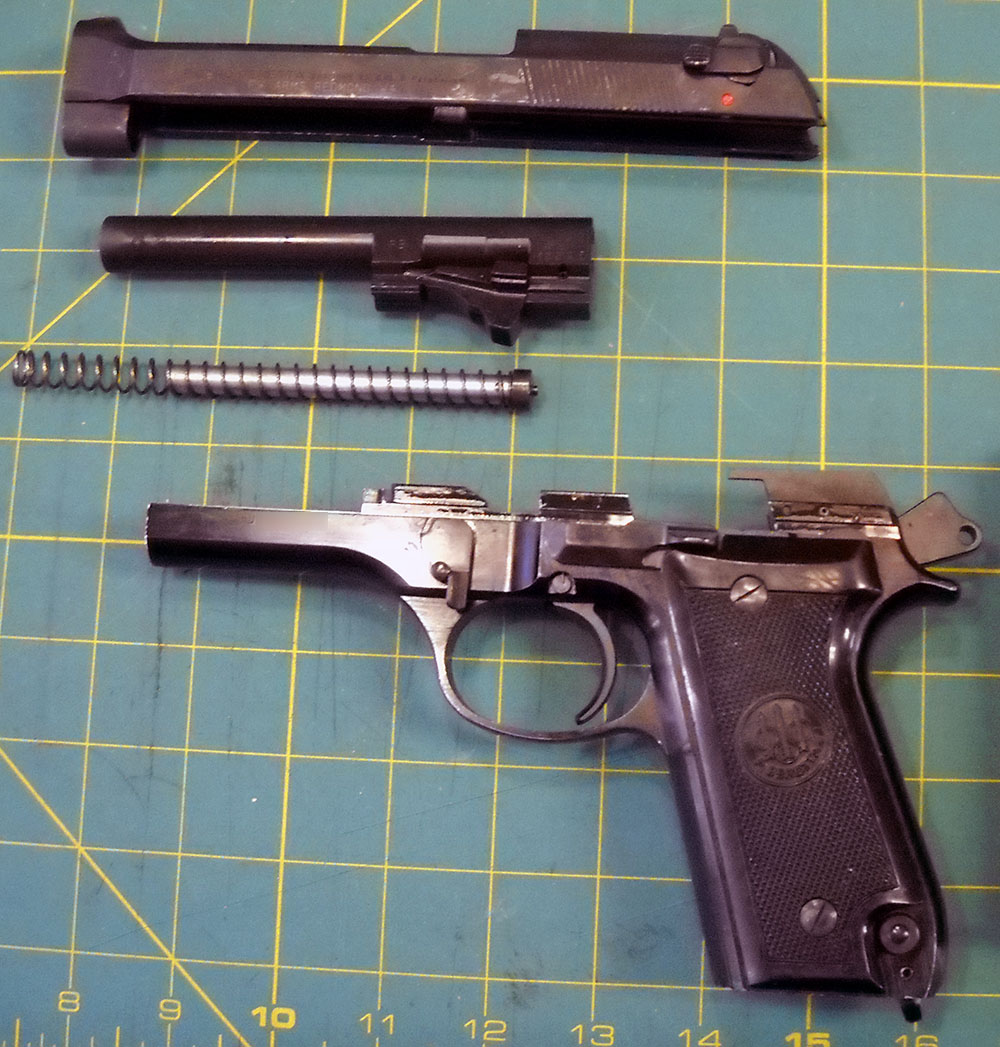
As an aside, it's interesting that the original 92 didn't have a slide-mounted decocking safety, since the Walther it was based on did. It's like Beretta's engineers decided to go their own way on that detail too, and then the Italian police said, "Hey wait, that was the best part."
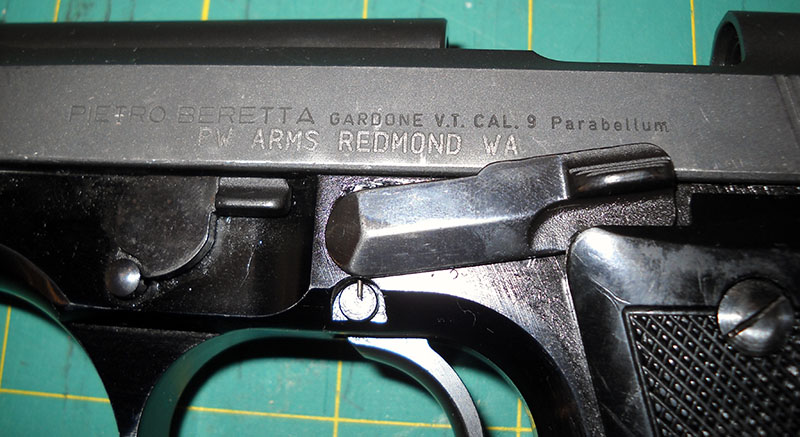
This particular 92S was until recently an Italian police sidearm; a large number of them have lately come onto the collector market here in the States, imported by the usual suspects, as the agencies that originally owned them have disposed of them. This one was brought in by the same importer that handled my P-64, which is probably not that surprising since I bought them through the same distributor. A nice coincidental feature of this gun is that Beretta already included almost all of the information required on imported guns, apart from the name of the importer, so they didn't feel the need to add anything but their name.
This is as good a place as any to digress for a moment and talk a little bit about the history of the company. You can see the name and location of the factory in the left-side slide stamping above: Pietro Beretta of Gardone. No, not Gardone, Vermont. V.T. stands for Val Trompia, the valley in Lombardy, northern Italy, where the town is located. (In fact, since this pistol was made, the name of the town has actually become "Gardone Val Trompia", in a sort of "Ice Planet Halloran V" maneuver.)
Gardone (population around 11,000) is one of those towns that have a long-standing tradition of gunsmiths and arms manufacturers—sort of an Italian equivalent of Liège in Belgium. It's an old mining town that's been known for its ironworks since Roman times, and guns have been made there pretty much since they came to that part of the world. The Beretta firm (rather boastfully) traces its origins back to 1526, when one Bartolomeo Beretta received a contract from the nearby Venetian Republic to make arquebus¹ barrels—although the contract rather implies that Beretta was already an established maker of gun barrels at that time.
His descendants continued the family business, in the same town, right down to the present day, which is pretty good going when you consider how many times that part of the world has changed hands over the last 500 years.
At any rate, the current management claim an unbroken line of descent from Bartolomeo Beretta. Which is true! Admittedly, the man who is president of Beretta today is only called Beretta because his father took the family name when he married Pietro² Beretta's daughter Giuseppina, but hey—that's just bureaucracy. Genetically it's just as valid.
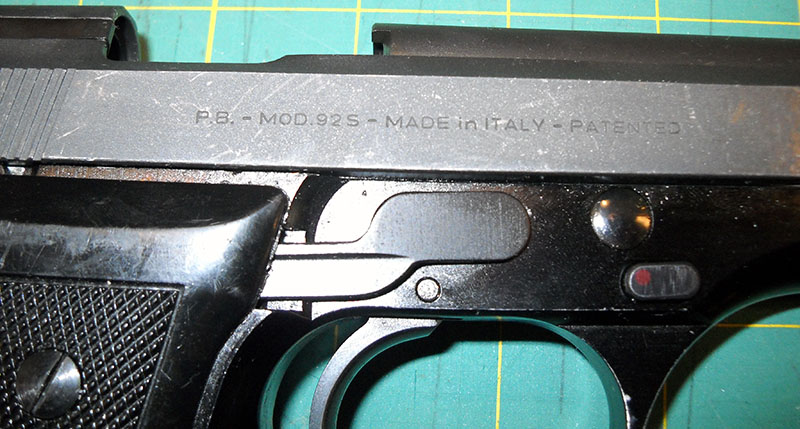
Over on the right side, they were nice enough to include "Made in Italy" (even though that must have been obvious to anyone in the original market), so a future US importer didn't have to.
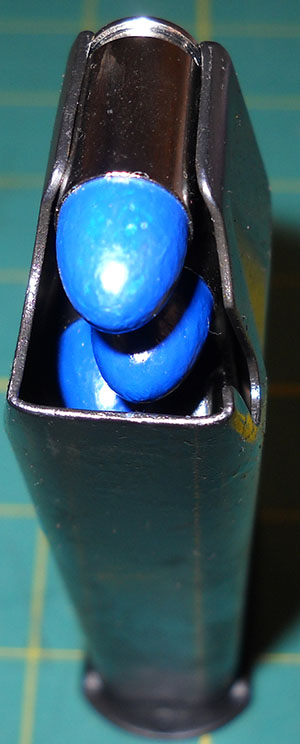
Like all the 92s chambered in 9mm Parabellum, the 92S uses double-stack, single-feed magazines; I think the 92S's hold 15 rounds.
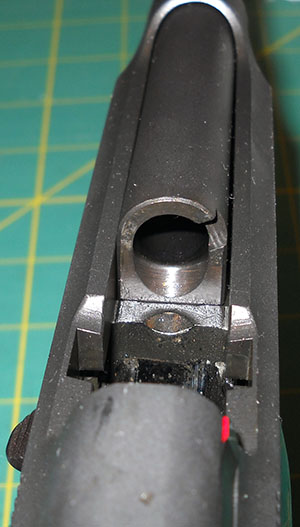
Interestingly, the 92S doesn't have a feed ramp to speak of; just that slightly beveled surface on the lower lip of the chamber. It also has the most half-hearted loaded chamber indicator I think I've ever seen, which someone at Beretta must have added solely because somebody insisted.
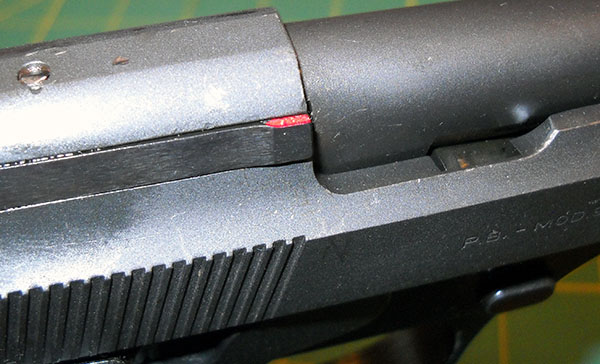
That is a bit of red paint on the top of the extractor, such that when it's in position on the rim of a chambered cartridge and sticking out a bit more than it otherwise would, it's a tiny bit more obvious. Wow, guys. I mean I'm not a big believer in LCIs, but still, way to phone that in.
In decent shape apart from decades of holster wear, these can be had from a variety of US distributors right now for around $350, which makes them a pretty good deal vs. a brand new 92FS at twice that or thereabouts. Apart from the caveat that the earlier-model magazines are a little harder to find (keeping in mind that 92FS magazines are abnormally common thanks to the M9), and the mildly weird S-model magazine release, they're well-made full-size 9mm service pistols and (IMO) would be a solid choice for someone looking for that kind of thing. Also just the thing for collectors specifically desiring a 92 made in Italy, since those sold new on the US market have been made at the Beretta USA plant in Accokeek, Maryland, since the '80s.
--G.
¹ An arquebus was a sort of small cannon—just barely small enough to be operated by one man—which was one of the earliest shoulder arms, forerunner to the musket.
² There have been more than one Pietros Beretta in the line since Bartolomeo. I'm not sure which one the modern company is named after; I'm guessing it's probably the one who lived from 1870 to 1957, the current president's grandfather.